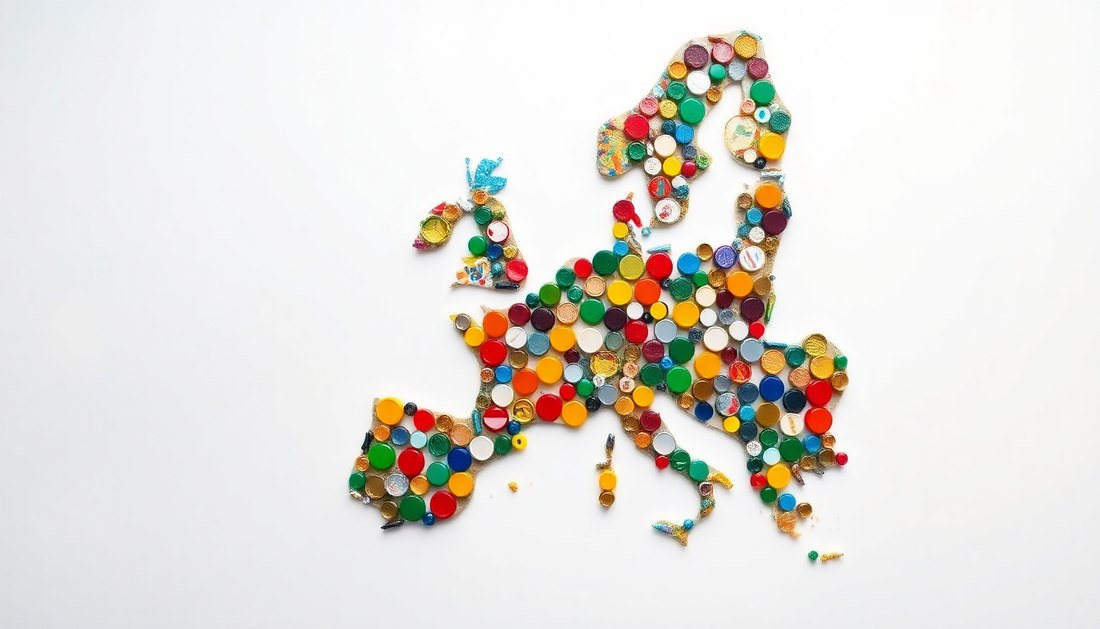In the ever-evolving landscape of environmental consciousness, the European Union has taken a bold step forward in its quest for a greener future. The decision to mandate a change in the design of bottle caps has sent ripples across the global packaging industry, signaling a shift towards a more sustainable and responsible approach to product design.
The Impetus for Change
The current state of plastic waste has become a pressing global concern, with millions of tons of non-biodegradable materials ending up in our oceans and landfills each year. The European Union, recognizing the urgent need to address this crisis, has implemented a series of regulations aimed at reducing plastic pollution and promoting a more circular economy.
One of the key initiatives in this endeavor is the mandate to redesign bottle caps, ensuring that they remain attached to the container during and after consumption. This seemingly simple change holds the potential to significantly reduce the amount of plastic waste generated, as loose caps often become separated from their bottles and contribute to the growing environmental crisis.
The Technical Transformation
The new bottle cap design is a testament to the ingenuity and innovation that can arise from the pursuit of sustainability. Manufacturers have been tasked with developing caps that are not only lightweight and durable but also dishwasher-safe and easily recyclable.
The material composition of these caps has undergone a transformation, with a shift towards more eco-friendly alternatives that prioritize longevity and recyclability. Gone are the days of single-use plastic caps that end up in landfills or oceans; the new design incorporates materials that can be easily reintegrated into the manufacturing process, reducing waste and promoting a circular economy.
The Impact on Industries
The bottle cap revolution has far-reaching implications for various industries, each of which must adapt to the changing landscape.
For beverage manufacturers, the transition presents both challenges and opportunities. They must invest in new production lines and packaging solutions to accommodate the updated cap design, while also exploring ways to minimize their environmental footprint and appeal to increasingly conscious consumers.
The packaging sector, in turn, must rise to the occasion, developing innovative solutions that cater to the evolving needs of the market. This includes not only the caps themselves but also the integration of these caps into the overall packaging design, ensuring a seamless and sustainable experience for the end-user.
The Consumer Perspective
As the driving force behind this change, consumers have a vital role to play in the success of the bottle cap revolution. The public's perception and acceptance of the new design will be crucial in determining its long-term impact.
Consumers can expect to see a range of benefits from the updated bottle caps, including improved functionality, enhanced durability, and a greater sense of environmental responsibility. By embracing these changes, individuals can actively contribute to the reduction of plastic waste and support the broader shift towards a more sustainable future.
Global Implications and the Way Forward
The European Union's decision to mandate the bottle cap redesign is not merely a local initiative; it has the potential to spark a global movement towards more sustainable packaging solutions. As other regions observe the successes and challenges faced by Europe, they may be inspired to follow suit, creating a ripple effect that could transform the global packaging landscape.
Looking ahead, the future of bottle caps holds the promise of continued innovation and technological advancements. As the industry adapts to the new regulations, we may witness the emergence of even more eco-friendly materials, streamlined manufacturing processes, and integrated solutions that seamlessly blend form and function.
Conclusion
The bottle cap revolution in Europe is a testament to the power of collective action and the unwavering commitment to environmental preservation. By mandating a change in the design of these seemingly small but ubiquitous components, the European Union has set the stage for a more sustainable future, one cap at a time.
As we embrace this transition, it is crucial that we all play our part – from manufacturers and policymakers to individual consumers. By working together, we can drive the bottle cap revolution forward, setting an example for the rest of the world and paving the way for a greener, more sustainable tomorrow.

